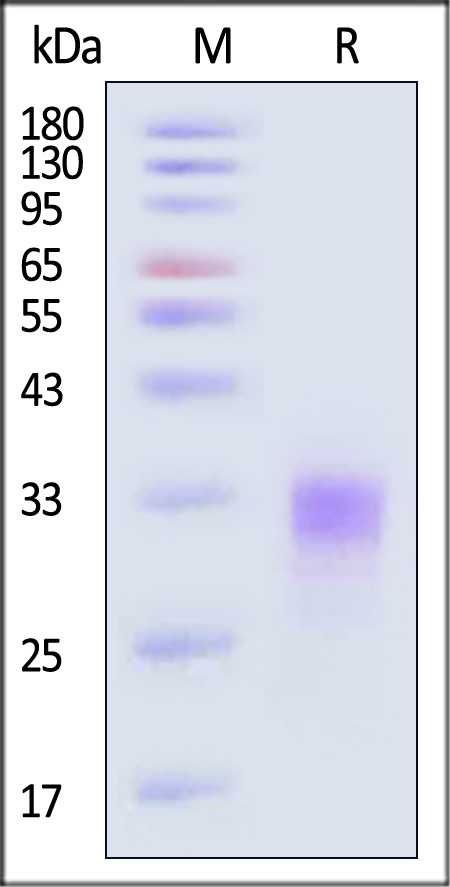Erythropoietin分子别名
EPO,EP,MVCD2,Erythropoietin,Erythropoetin,Erthropoyetin,Hematopoietin,Hemopoietin
Erythropoietin分子背景
Human Erythropoietin (EPO) is also known as EP, erythropoetin or erthropoyetin, and is a glycoprotein hormone that controls erythropoiesis, or red blood cell production. EPO is a cytokine for erythrocyte (red blood cell) precursors in the bone marrow. is synthesized by renal peritubular cells in adults, with a small amount being produced in the liver. Regulation is believed to rely on a feed-back mechanism measuring blood oxygenation. Constitutively synthesized transcription factors for EPO, known as hypoxia-inducible factors (HIFs), are hydroxylated and proteosomally digested in the presence of oxygen. It binds to the erythropoietin receptor (EpoR) on the red cell surface and activates a JAK2 cascade. Erythropoietin has its primary effect on red blood cells by promoting red blood cell survival through protecting these cells from apoptosis. It also cooperates with various growth factors involved in the development of precursor red cells. EPO has a range of actions including vasoconstriction-dependent hypertension, stimulating angiogenesis, and inducing proliferation of smooth muscle fibers. It has also been shown that erythropoietin can increase iron absorption by suppressing the hormone hepcidin. Erythropoietin has been shown to interact with the Erythropoietin receptor as its mechanism of action within the body. erythropoietin plays an important role in the brain's response to neuronal injury. EPO is also involved in the wound healing process.






















 Star Ribbon预染蛋白Marker蛋白质标记物是生物研究和药物开发的重要组成部分。无论是用于蛋白质电泳还是western blot,我们的预染色蛋白质标记物帮助您快速确定目标蛋白质的分子量或评估转移效率。Fc受体蛋白治疗性抗体的功效取决于Fab片段及其对目标抗原的结合活性,还取决于Fc片段及其与关键Fc受体的相互作用。因此,在抗体工程中候选物必须针对一系列受体进行测试。探索我们的重组Fc受体蛋白质的全面收藏!
Star Ribbon预染蛋白Marker蛋白质标记物是生物研究和药物开发的重要组成部分。无论是用于蛋白质电泳还是western blot,我们的预染色蛋白质标记物帮助您快速确定目标蛋白质的分子量或评估转移效率。Fc受体蛋白治疗性抗体的功效取决于Fab片段及其对目标抗原的结合活性,还取决于Fc片段及其与关键Fc受体的相互作用。因此,在抗体工程中候选物必须针对一系列受体进行测试。探索我们的重组Fc受体蛋白质的全面收藏!































 膜杰作
膜杰作 Star Staining
Star Staining



















